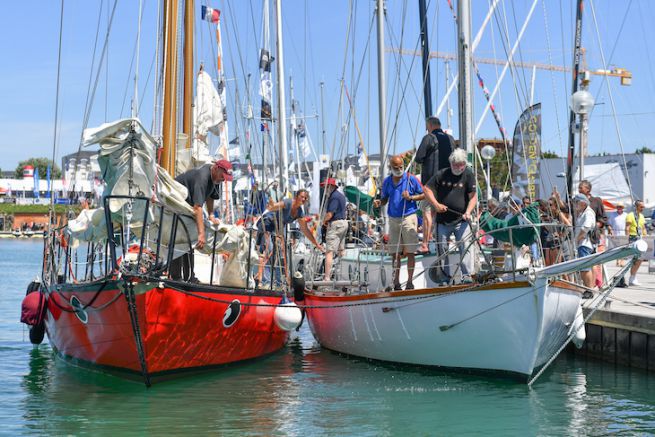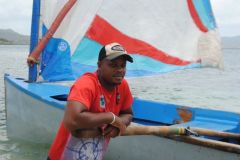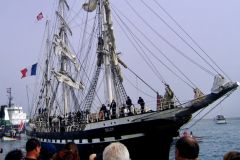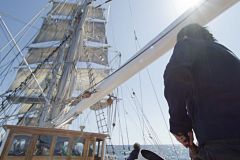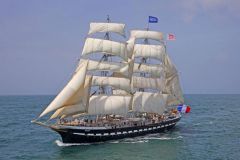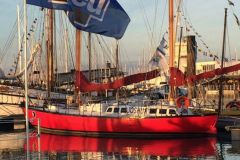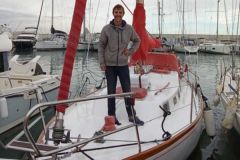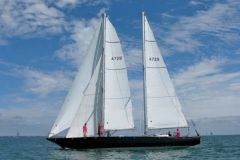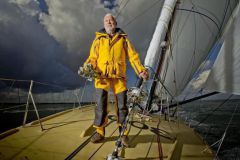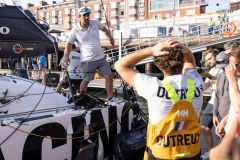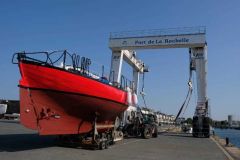A beautiful tribute to the first single-handed round-the-world sailing race
The Golden Globe Race - a single-handed, non-stop, unassisted and un-routed circumnavigation of the globe - is the first single-handed circumnavigation of the globe to be raced in 1968/1969. At the start there were 9 participants and at the finish there was only one solo sailor to complete the course: the Englishman Sir Robin Knox-Johnston. To pay homage to this great first, the Golden Globe Race returns in 2018 (50 years later!) with a start given on the 1st of November e july in Les Sables-d'Olonne. The rules don't change: a sailor and a boat facing the great oceans of the world..
With the opening of the village on 16th June, the 17 skippers in contention joined Les Sables-d'Olonne. Among them the famous English sailor on his equally famous sailing boat Suhaili . Even if he doesn't take part in this new round the world race - he has three to his credit - he will give the top start from the deck of his boat. He will be accompanied by Joshua, positioned at the other end of the start line.

Two mythical sailing ships together for the first time
It is another mythical yacht from the first edition that we find at the quayside, next to Suhaili: Joshua, Bernard Moitessier's red-hulled steel ketch. The two men ran the same race, but did not meet for many years. Firstly because they started from two different places, as Sir Robin Knox-Johnston explains "We never met because we started from different ports 6 weeks apart. I had sailed from Falmouth on June 14th and Bernard had sailed from Plymouth in England on August 22nd."
Then because the race was run using sextants, paper cards and stopwatches and keeping an eye on the barometer. Moitessier had refused to bring a radio, arguing that no intrusion from the outside world would interrupt his journey. He already had a negative view of the commercialization of the race by the Sunday Times, which he saw as a "good thing" "violation of the spiritual idea that inspired the competition."

Finally because Moitessier, to "save his soul" turned east after rounding Cape Horn to make a second round of the South Ocean. "Moitessier rounded Cape Horn on February 5, 19 days after the Suhaili. Had he continued, Bernard would no doubt have set a faster round-the-world record, but he wouldn't have beaten me back in England." details the English skipper.
The 2 e joshua's life
After 300 days at sea, Moitessier and Joshua anchored in Papeete, Tahiti, on June 21, 1969. He stayed there for 17 years and founded a new family - his wife Françoise remained in France - with his companion Iléana, who gave him a son Stephan in 1971.

In 1982, Joshua - along with 25 other boats - was destroyed by a hurricane in the port of Cabos San Lucas, Mexico. Dismasted, badly damaged, it was found on the beach, deeply embedded in the sand. With the hull intact, a team - led by local Reto Fili - spent a week digging a trench to free the wreck from the sand. Moitessier then entrusted Joshua's refit to the young man. Brilliantly refitted, Reto brings the boat to Seattle, where the American Johanna Slee - a professional sailor - buys it.
In 1989, the ketch was noticed by Virginia Connor, who sent a photo of the boat to Voiles & Voiliers to identify it. It was then that Patrick Schnepp, director of the National Maritime Museum in La Rochelle, crossed the Atlantic to buy it and bring it back to France. There the boat was restored to its almost original state. The metal mast installed after the hurricane has remained, but it has a new engine and the cabin is now equipped with bunk beds to give people the opportunity to travel together.
Unlike Suhaili who is not listed in the English Register of Historic Ships because she is 18 cm missing, Joshua is listed as a national treasure. It is maintained as a living museum by the "Friends of Joshua", an association that gives the public the opportunity to sail on it.

A late meeting
"We finally met years later at a press conference in Paris. Bernard was very generous, but confessed to me that he had thought the race was lost until Australia, his last contact with the outside world. I think he continued for a second round the world trip after rounding Cape Horn because at the time he was finally at sea and didn't want to go back to an increasingly commercial world" adds the winner of the first solo round-the-world race.

